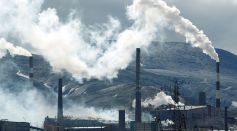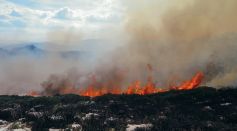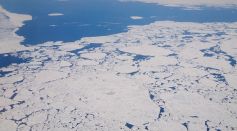Tags: Arctic
Melting Polar Ice Caps: What are Its Effects on the Earth's Rotation? Here’s What Expert Says
Meet the Ten People Who Played Important Roles In Science In 2020
Experts Say There's a New Normal in the Arctic

Data Shows The Effect of Melting Ice on Rising Sea Levels
Ozone Layer May Fully Recover Despite Holes Over the North & South Poles

A Recent Study Illustrates Actual Extent of Damage from Arctic Pollution

Arctic 'Zombie' Wildfires Release Megatons of Carbon Dioxide

‘Impossible' Arctic Wildfires Emerged Due to Global Warming
Russia's Oil Spill Blamed on Melting Permafrost; Clean-up Could Take 10 Years
Zombie Fires in Arctic are Coming Back to Life, What Could this Possibly Mean?
Origami-Inspired Foldable Lunar Shelter for NASA's Artemis Set to be Tested on Arctic this Fall
Morbid Effects of Climate Change Shows Wolf Spiders Resort to Cannibalism
1 Kilometer Ozone Hole Above the Arctic Has Finally Closed Due To Polar Vortex Warming
The Sea Around North Pole Will Become Ice-free in the Summer Before 2050 Even If Temperatures Are Kept Under 3.6°F
LARGEST! 1 Million Square Kilometer Hole Opens in Ozone Layer Above the Arctic

Sea Ice Movements Critical to Climate Change Study
World Loses $70 Trillion on the Melting of the Arctic
Air Temperature In The Arctic Speeds Up Climate Change
Increase in Arctic Temperatures Inevitable
12,000 Year-Old Methane-Leaking Craters Discovered In The Arctic Sea Floor
Most Popular

Why Stars Twinkle: Flickering Explained by Atmospheric Turbulence and Light Distortion

The Role of Materials Science in Engineering: How Modern Engineering Materials Drive Innovation

Tornadoes vs. Waterspouts vs. Dust Devils: Key Differences and Vortex Types Explained

Climate Adaptation Strategies Explained: How Societies Respond to Climate Change




